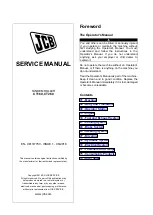
FARMI 4670
16
PRACTICE RUNS
•
Drive through every movement with an unloaded
crane, paying attention to the positions in which
the crane can hit obstacles.
•
Move the control levers smoothly and steadily,
avoiding quick and jerky movements.
•
Learn to use several functions simultaneously. This
enables smooth, precise operation.
•
Start off at a low engine speed in order to avoid
sudden movements.
•
When you have become accustomed to the crane’s
movements, choose the appropriate engine speed
so that operation is efficient but you still have the
movements under control.
The lowest recommended operating temperature for
the crane is -25
o
C.
Note that the hydraulic seals, hoses, and steel structures
are prone to damage at low temperatures.
When starting work at cold temperatures, first let the
oil flow freely through the valve for a couple of minutes.
The maximum operating temperature for hydraulic oil
is +75
o
C.
Use the support legs only to
provide additional support for
the vehicle.
When working on an inclined surface, do not load the
crane with the full lifting torque, and be extremely
careful.
When loading from uphill, note that the slewing
movement may not be able to support the load but
the pressure relief valves can be overloaded and the
load can move down, causing a danger of the crane
falling over.
Never move the boom to its
extreme position at full speed!
Be careful when working near
electric cables.
Observe the safe distances.
When transferring the crane, support it against the trai-
ler body or load.
DETACHING THE CRANE
Ensure that the ground under the crane is sufficiently
hard and level.
Ensure that there are no extra people around and that
no danger will be caused to others where the crane is
to be stored. Pay special attention to the storage loca-
tion of the control valve, ensuring that, e.g., it is out of
the reach of children.
Always switch the pump off
before removing the quick coup-
ling between the crane and the
vehicle.
When detaching the crane from
the vehicle, make sure that there
are no people in the immediate
vicinity.
1. Lower the support legs to the desired height.
2. Lower the booms as shown in fig. 2.
3. Lower the crane using a hoist.
4. Make sure that the crane cannot lean over. Fig. 2.
5. Detach the crane from the vehicle.
6. Detach and cover the control valve’s quick
couplings.
Fig. 2. Lowering the booms
CAUTION!
!
CAUTION!
!
CAUTION!
!
WARNING!
!
!
DANGER!
All manuals and user guides at all-guides.com
















































